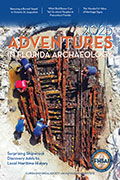Florida Frontiers Articles
Florida Frontiers: The Weekly Newspaper Articles of the Florida Historical Society is a weekly newspaper article covering history-based events, exhibitions, activities, places and people in Florida. The newspaper articles premiered in January 2014. We explore the relevance of Florida history to contemporary society and promote awareness of heritage and culture tourism options in the state.
When Juan Ponce de León “discovered” Florida in 1513, native people had been living here for more than 10,000 years.
The native population had complex societies, elaborate systems of trade, and their own ancient religions. They had villages with large ceremonial centers surrounded by buildings built on shell mounds. Villages throughout this land had council houses built of wood and thatch that could hold more than 1,000 people.
At the time of European contact, there were a dozen tribes in “La Florida” with their own distinctive cultures.
While many of Florida’s tribes were sophisticated hunters and fishermen, the Apalachee in the Panhandle were accomplished farmers. They grew corn, beans, pumpkins, and other crops. The Apalachee food storage system was so effective... click title or here for the full article
Nestled within the hustle and bustle of urban south Florida is a serene and contemplative place that evokes rural Japan.
The Morikami Museum and Japanese Gardens in Delray Beach was a gift to Floridians from successful farmer George Morikami, who emigrated here in 1906 as a member of the Yamato agricultural community.
“The Japanese heritage of Palm Beach County is something that is really little known and little understood,” says Tom Gregerson. After 35 years as senior curator at the Morikami Museum and Japanese Gardens, Gregerson retired in 2013. “It’s a surprise for our visitors to find that there was once a colony of Japanese living in this area.”
Jo Sakai, a recent graduate of the business school at New York University, came to Florida in 1903 with plans to crea... click title or here for the full article
A fleet of ships carrying 1,500 colonists sailed into what is now Pensacola Bay on August 15, 1559. The men, women, and children aboard the ships were led by Spanish conquistador Don Tristan de Luna.
De Luna’s plan was to establish the first permanent European colony in North America. He called the settlement site Ochuse, La Florida. We call it Pensacola, Florida. The colony at Ochuse was to be the first in a series of settlements that would spread west along the gulf coast and north into the heart of the continent, securing the territory for Spain.
Before the colonists could finish unloading their ships, a violent hurricane struck, sinking the fleet.
Although the colonists persevered for two years in difficult circumstances, de Luna was forced to abandon his attemp... click title or here for the full article
Some unfortunate people suffer from the misconception that Florida history is boring.
Other uninformed people don’t think that Florida has much significant history at all.
None of these people has ever attended a Brevard Theatrical Ensemble presentation of “Mosquitos, Alligators, and Determination,” now in its all-new seventh edition. If they had, they would know that Florida history is exciting, entertaining, diverse, and important.
“Lady” Gail Ryan, who earned her honorific title from the Dade County Commission for work on Miami Renaissance Fairs, is founder and director of the Brevard Theatrical Ensemble. Under Ryan’s enthusiastic and creative leadership, the group has been performing for more than twenty five years.
The original production of “Mosquitos,... click title or here for the full article
At 175 feet, the Ponce Inlet Lighthouse is the tallest lighthouse in Florida.
In the United States, only North Carolina’s Cape Hatteras Lighthouse and Virginia’s Cape Charles Lighthouse are taller.
Many people who brave the 203 steps to get to the top of the structure have a more difficult time coming down than going up.
“We have to talk them down. Some people come down backwards on the stairway. Some come down on the seat of their pants. It’s quite a sight to see,” says Bob Callister, programs manager for the Ponce Inlet Light Station. “Most people really enjoy, once they get up to the top and feel the cool air and see the beautiful view.”
On a clear day, you can see all the way to the Cape Canaveral Lighthouse.
Ponce de León Inlet, popularly known as... click title or here for the full article
“Imitation is the sincerest form of flattery.”
No, this is not a quote from Ernest Hemingway. That aphorism is from late 18th and early 19th century English cleric Charles Caleb Colton, but it does reflect the spirit of the Hemingway Days celebration.
For the past week, the 34th Annual Hemingway Days Festival has been held in Key West, with a “Hemingway in Key West” exhibit at the Custom House Museum, a Marlin Fishing Tournament, an evening of readings and presentations by local authors, a Caribbean Street Fair, an arm wrestling championship, a unique “bull run,” and other events.
The winners of the Hemingway Short Story Competition are announced, and more than $120,000 is raised for nursing, poetry, and journalism scholarships in memory of writer Ernest Hemingway.... click title or here for the full article
Forty-five years ago this week, the flight of Apollo 11 changed the course of human history.
On July 16, 1969, a Saturn V rocket launched from the Kennedy Space Center carrying astronauts Neil A. Armstrong, Michael Collins, and Edwin E. “Buzz” Aldrin Jr. into space. Four days later, Neil Armstrong, closely followed by Buzz Aldrin, left the lunar module Eagle and walked on the surface of the moon.
Historians, humanities scholars, and sociologists say that the moment Neil Armstrong set foot on the moon, the Modern Era ended and the Post-Modern Age began.
With the words “It’s one small step for man, one giant leap for mankind,” Armstrong moved us all from an era that began with the European Renaissance of the 1400s into a future we are still creating.
Florida hi... click title or here for the full article
Doris Leeper was a visionary artist and environmentalist. She was instrumental in the creation of the Canaveral National Seashore, established the Atlantic Center for the Arts in New Smyrna, and was a celebrated sculptor and painter.
A native of Charlotte, North Carolina, Leeper was born in 1929. She graduated from Duke University in 1951 with a degree in art history. After a decade working as a commercial artist, Leeper focused on her own original pieces.
Best known for her large-scale, site specific modern sculpture, Leeper quickly gained international recognition. More than 100 of her pieces are displayed by museums, corporations, and private collectors.
The Doris Leeper sculpture that has probably been seen by the most people is “Steel Quilt,” permanently on dis... click title or here for the full article
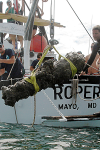
Every Fourth of July, Floridians celebrate Independence Day with cookouts, hometown parades, and of course, fireworks as America’s victory over the British in the American Revolution is commemorated.
Not all American colonists supported the war, though. Many remained dedicated to King George III and England. As the American Revolution progressed, these Loyalists became refugees and were forced to flee the colonies.
From 1763 to 1783, Florida remained under British control; so many Loyalists came here from the American colonies to the north.
On December 17, 1782, as the end of the American Revolution approached, 16 ships left Charleston, South Carolina bound for the Loyalist port of St. Augustine, Florida. The ships carried hundreds of people, civilian as well as mil... click title or here for the full article
Florida Today 22
Florida Frontiers “Maya Angelou, Ruby Dee, and Zora Neale Hurston”
Ben Brotemarkle
We recently lost two significant contributors to our culture.
Poet, author, and performing artist Maya Angelou died on May 28, at the age of 86. Actress, playwright, and activist Ruby Dee died on June 11, at the age of 91.
These strong, influential, and talented women were both significantly influenced by Florida writer, folklorist, and anthropologist Zora Neale Hurston.
Both Maya Angelou and Ruby Dee contributed to the new book “Reflections from ZORA! Celebrating 25 Years of the Zora Neale Hurston Festival of the Arts an... click title or here for the full article
Florida Today 21
Florida Frontiers “Cemeteries as Living History Symposium”
Ben Brotemarkle
After the loss of a loved one, a cemetery can be a place of quiet reflection, private mourning, and feeling more connected to the person who has passed away.
As years, decades, and centuries go by, cemeteries become outdoor museums, reflecting the values, beliefs, and attitudes of the societies that created them.
On Saturday morning, the Florida Historical Society Archaeological Institute (FHSAI) will present a symposium called “Cemeteries as Living History” at the Historic Rossetter House Museum and Gardens in the Eau Gallie section of Melbourne.
... click title or here for the full articleFlorida Today 20
Florida Frontiers “Florida Cattle”
Ben Brotemarkle
Even where urban sprawl has enveloped large portions of the Florida landscape, Florida cattle are never too far from view. Traveling the major interstates, highways, and particularly rural roads throughout the state, herds of cattle can be seen grazing on even small patches of land. White birds called cattle egrets often stand on or near the cows, eating ticks, flies, and other insects attracted to the large mammals.
Cattle first came to Florida with the Spanish.
After Ponce de Léon gave our state its name in 1513, he returned eight years later to establish a colony in Southwest... click title or here for the full article
Florida Today 19
Florida Frontiers “St. Mark’s Episcopal Church”
Ben Brotemarkle
Today, parking in downtown Cocoa can be at a premium when services or special events are held at St. Mark’s Episcopal Church.
When the church was first built in 1886, many in the congregation would arrive by water, mooring their boats on the banks of the Indian River. It’s just a few steps from the river’s edge to the front door of the church. Others would walk to church from homes along the river.
The first meeting of what would become St. Mark’s Episcopal Church was held on June 2, 1878. The Right Reverend John Freeman Young, Bishop of Florida, and Dr. William H.... click title or here for the full article
Florida Today 18
Florida Frontiers “The Peter Demens Story”
Ben Brotemarkle
Peter Demens lived in Florida for only eight years, but his time here is memorable.
While living in Longwood, just north of Orlando, Demens constructed buildings on the campus of the state’s oldest private college, established a railway connecting Central Florida to the Gulf Coast, and gave the city of St. Petersburg its name.
Peter Demens was born Pytor A. Dementyev. Although he was an orphan by age 4, Demens was well provided for by his wealthy family in Russia. Demens was raised by his maternal uncle, a nobleman named Anastassy Alexandrovich Kaliteevsky. He grew up wi... click title or here for the full article
Florida Today 17
Florida Frontiers “The John H. Sams Homestead”
Ben Brotemarkle
Life in Eau Gallie just wasn’t working out for John H. Sams and his family.
Sams and his wife Sarah had followed other family members from South Carolina to Eau Gallie, establishing their own homestead in 1875.
The 36 year-old Sams built a cabin for his wife and five children near the home of his cousins in the LaRoche family. For three years, Sams tried to establish a successful orange grove, but failed. He had no better luck with other crops he attempted to grow. In 1878, Sams decided to move his family to Merritt Island, because “it looked more like South Carolina... click title or here for the full article
Florida Today 16
Florida Frontiers “Jules André Smith and the Maitland Art Center”
Ben Brotemarkle
Artist, architect, writer, and World War I veteran Jules André Smith intended to move from Stony Creek, Connecticut to Miami, Florida, to enjoy a peaceful retirement. As he traveled through Central Florida in 1932, Smith saw a beautiful sunset on Lake Sybelia in Maitland and decided he needed to go no further.
By 1937, Smith had designed and built an artist’s colony called the Maitland Research Studio, which included one of only three art galleries in the state of Florida. An example of Fantasy Architecture, the design of the compound included a unique juxtaposition of Maya... click title or here for the full article
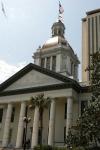
Today, it takes about three hours to get from St. Augustine to Tallahassee, heading north on I-95 then west on I-10. To get to Pensacola, you just stay on I-10 for about another three hours.
The fact that Tallahassee is located approximately half way between St. Augustine and Pensacola is why it is our state capital.
Looking at a map of our state, it would seem logical for the capital to be in Orlando, or some other centrally located city. While it takes only three hours to get from Pensacola to Tallahassee, the drive from Miami to the state capital is almost seven hours.
If you are leaving Key West for Tallahassee, plan on a full day of travel lasting just under ten hours. In the same amoun... click title or here for the full article
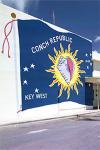
Florida seceded from the Union on January 10, 1861. We were the third state to do so, behind South Carolina and Mississippi. As a founding partner in the Confederate States of America, Florida helped to catapult the nation into a divisive and bloody Civil War.
When Florida seceded, the island outpost of Key West remained under Union control throughout the war.
Florida was readmitted into the United States of America on July 25, 1868.
More than a century later, Floridians from Key West would lead their own secession effort that was much more productive, successful—and humorous.
On April 18, 1982, the United States Border Patrol established a roadblock on U.S. Highway... click title or here for the full article
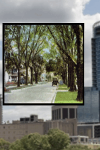
In his play “Romeo and Juliet,” William Shakespeare wrote: “What’s in a name? That which we call a rose by any other name would smell as sweet.”
Juliet’s argument was that it doesn’t really matter what people, places, or things are called; it’s what they are that is important.
... click title or here for the full article
As innocent four-year-old girls in the late 1940s, Katie, who is white, and Delia, an African-American, become best friends despite societal pressures against them. In 1960, when the girls are 16, Kate abandons her childhood friend when she is needed most. In 2006, Kate is working to earn Delia’s forgiveness as danger surrounds the women’s reunion.
That’s the premise of the new novel “Reparation” by Titusville author Ruth Rod... click title or here for the full article
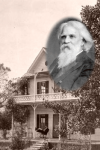
In 1876, businessman Henry A. DeLand left his home in Fairport, New York, to visit his sister and brother-in-law in east central Florida. DeLand’s relatives, Mr. and Mrs. O.P. Terry, had created a rural homestead in west Volusia County.
Henry DeLand left New York on a train to Jacksonville. From there he took a steamboat down the St. Johns River to Enterprise. A horse and buggy carried him the rest of the way to the Terry’s isolated home. DeL... click title or here for the full article
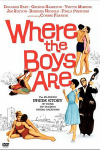
Spring has always been thought of as a period of renewal and rebirth. The season also has long been associated with revelry and excess. In the spring, ancient Greeks worshiped Dionysus, the god of wine. At the same time of year the Romans venerated Bacchus, their god of wine. Other pre-Christian pagan fertility rites evolved into contemporary May Day celebrations.
Since the mid-twentieth century, students in their late teens and early twentie... click title or here for the full article

This is not the first column about Florida history and culture to appear in Florida Today. Many longtime residents of east central Florida remember fondly the articles of Weona Cleveland. For more than forty years, Weona Cleveland has written about the people, places, events, and even the plants that make our area unique and have brought us to where we are today.
Weona Cleveland’s articles first appeared in the Melbourne Times ... click title or here for the full article
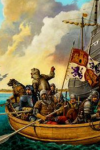
Five hundred and one years ago, Juan Ponce de León set sail from Puerto Rico in search of undiscovered land, slaves, and gold. His fleet of three ships included the Santiago, the San Cristóbal, and the Santa María de la Consolación.
The ships reached the northern end of the Bahamas by March 27, 1513, which was Easter Sunday. Ponce and his crew sailed for another few days until they sighted land on April 2. Because it was the E... click title or here for the full article







